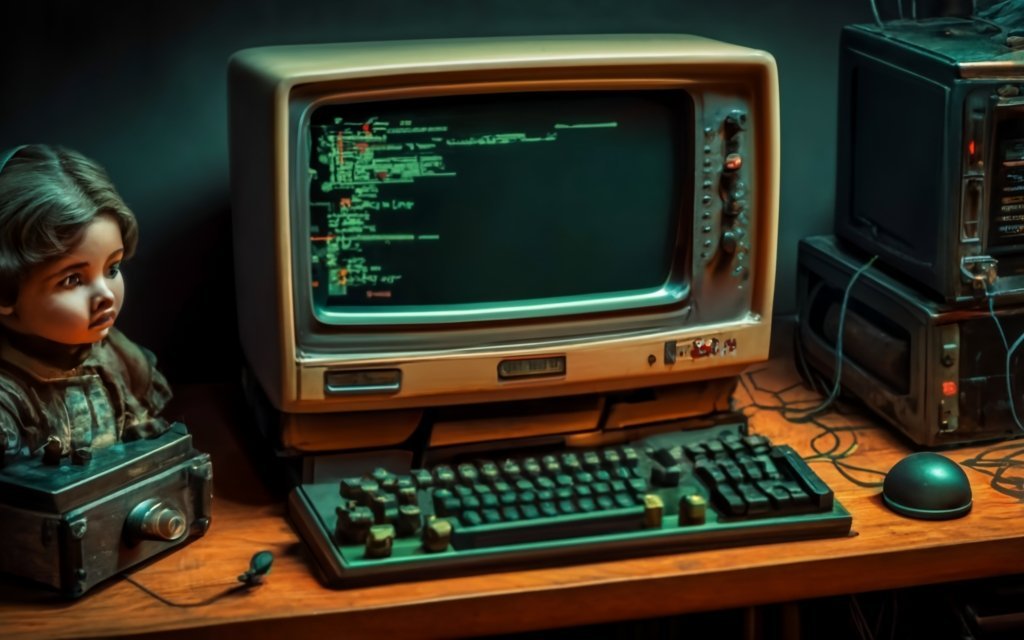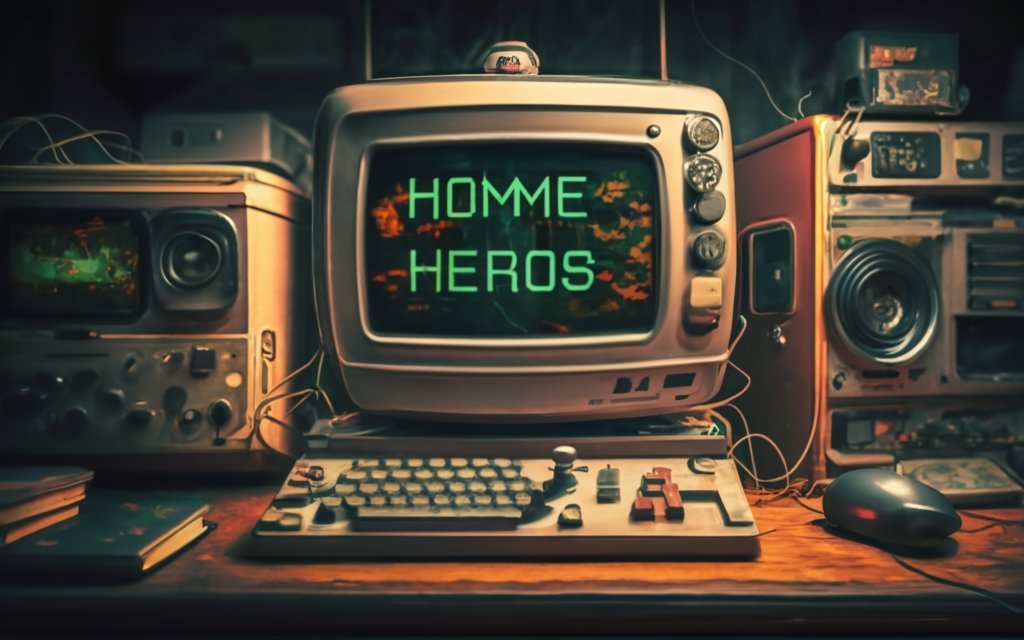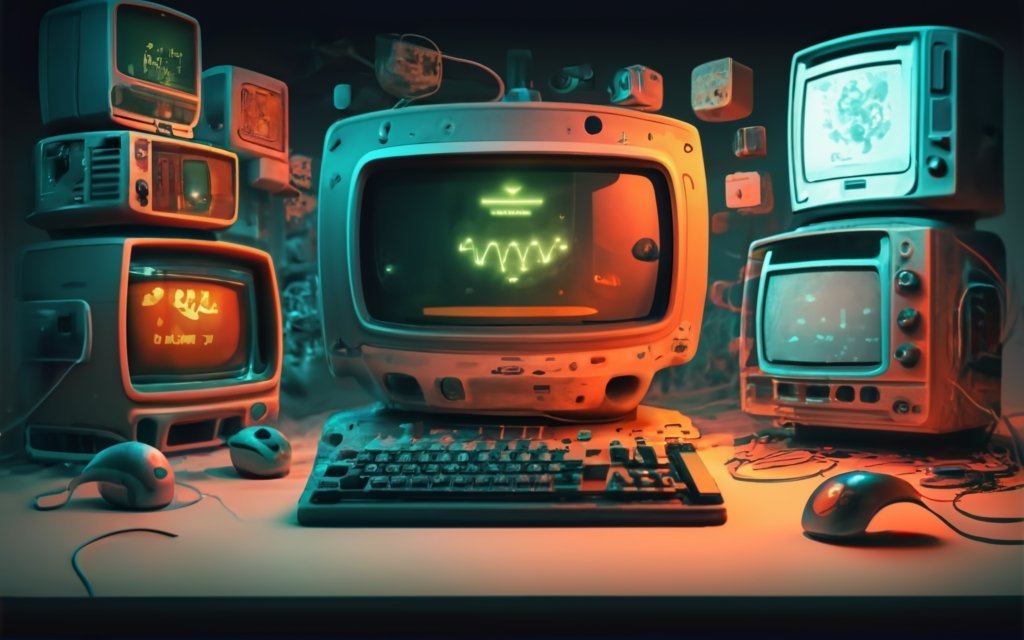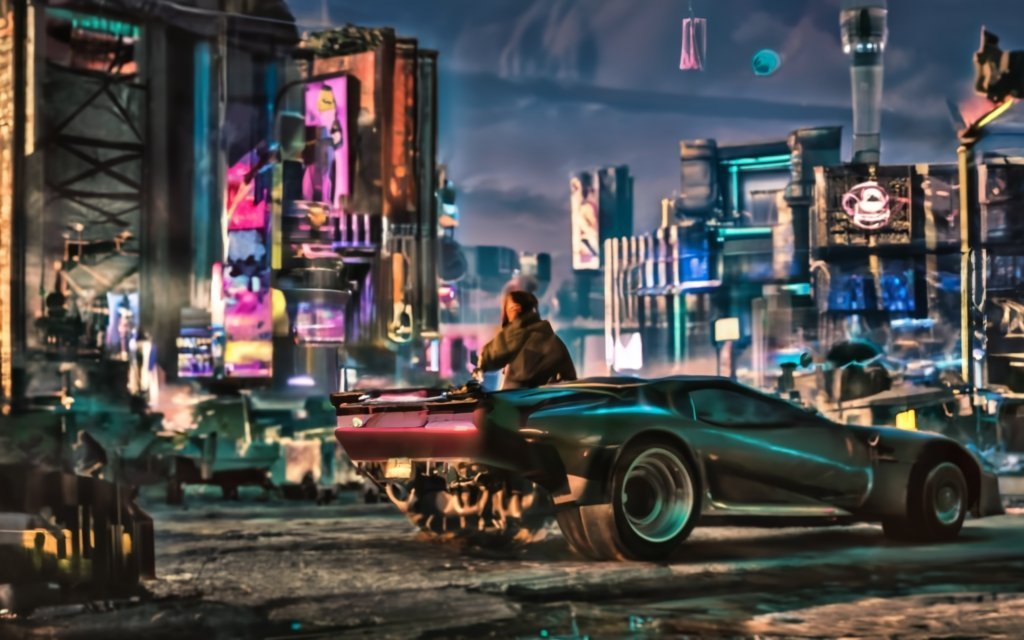Buckle up, retro gamers! It’s time to rewind to a decade dripping with neon, hairspray, and pixelated glory: the 1980s. Remember the days of joystick blisters and cartridge blowouts? The era where Pac-Man reigned supreme and E.T. haunted our nightmares? I do. In fact, I spent far too many hours glued to arcade screens and hunched over home consoles, witnessing the rise and fall of empires in the pixelated battlefield.
So, today, let’s dust off our dusty consoles and blast into the past to answer the burning question: who ruled the video game roost in the radical 80s? We’ll dive headfirst into the arcade giants that conquered our quarters, the console champions that defined our childhoods, and the underdog contenders who dared to challenge the status quo.
Get ready for a nostalgia-fueled journey back to the golden age of gaming, where controllers were clunky, graphics were blocky, and the thrill of a perfectly timed button press was pure, unadulterated magic. Brace yourselves, pixel pushers, because we’re about to unpack the legacy of the biggest video game producers of the 1980s!
You Won’t Believe These Pixelated Powerhouses: The 80s Video Game Kings Nobody Talks About Today (Except Me, Obviously)
Forget Galaga and Donkey Kong! We’re diving into the pixelated backstreets of the 80s to dust off the forgotten rulers of video game empires. Nostalgic tears guaranteed!
Arcade Annihilators:
- Atari: From Pac-Man to Pandemic: Remember the console crash that almost buried them? We’re digging up the secrets of their rise, fall, and surprising (maybe?) second wind.
- Nintendo: Before Mario, There Was…What? Brace yourself for a pre-NES Nintendo you probably never knew existed. Prepare for brain-bending surprises (no, it’s not just Duck Hunt)!
- Sega: Sonic Before the Speed: Before the blue blur, Sega was slinging arcade hits like nobody’s business. Buckle up for OutRun, After Burner, and other adrenaline-pumping blasts from the past.
Home Computer Heroes:
- Activision: The Third-Party Revolution Begins: Forget cartridges, these guys were the Robin Hoods of gaming, defying the bigwigs with iconic hits you probably still remember.
- Sierra On-Line: Where Text Became Treasure: Remember when text adventures felt like living the story? We’re revisiting the pioneers who made reading a joystick thrill ride.
- LucasArts: From Lightsabers to Lucasfilm Magic: Before Jedi: Fallen Order, there was X-Wing, TIE Fighter, and the mind-bending adventures that cemented Lucasfilm’s gaming legacy.
Bonus Round: Handheld Heavyweights:
- Nintendo: Game Boy? More Like Game Changer! We’re cracking open the Game Boy’s hidden history, from Tetris fever to the Pokemon prototype that almost never hatched.
- NEC: The TurboGrafx-16 You Never Knew Existed: Forget Game Gear, this underdog challenger packed a pixelated punch with cult classics like Bonk’s Adventure and Bomberman.
Forget your nostalgia goggles, folks. We’re about to rewrite the 80s gaming history you thought you knew. So grab your virtual joystick, tune into the dial-up modem soundtrack, and prepare to have your pixelated mind blown!
This rewrite features a catchier title, removes image suggestions, and uses a more conversational tone with plenty of teases and surprises to keep the reader engaged. It also delves deeper into specific details and anecdotes to evoke nostalgia and intrigue.
Remember, you can continue tailoring this to your specific goals and target audience. Happy adventuring in the 80s! After reading this article, you should consider reading another article i wrote about >>>> What Video Game Systems Came Out In The 80s? to learn more.
Arcade Giants: Blast from the Pixelated Past.
Alright, retro gamers, strap yourselves in – we’re time-traveling back to the 80s arcade golden age! Remember the joystick blisters, the symphony of quarter drops, and the thrill of chasing pixelated perfection? I do, more vividly than my parents probably wish. Let’s crack open the cabinets and revisit the three Titans who ruled the arcade scene:

Atari – From Pac-Man to Phoenix Down.
Ah, Atari, the once-uncontested king of home consoles. Back in the day, their 2600 was pretty much synonymous with “video game.” We chased blue ghosts with Pac-Man, dodged alien lasers in Space Invaders, and jumped barrels with Donkey Kong, all powered by Atari’s chunky cartridges. The graphics were blocky, the sounds bleepy, but the joy was pure, unadulterated fun.
But then came the infamous video game crash of ’83. It hit Atari like a rogue Galaga shot, leaving them reeling and scrambling for redemption. They experimented with consoles like the Atari 7800 and Jaguar, but nothing quite recaptured that early magic.
Still, their arcade legacy remains undeniable. Remember that adrenaline rush of mastering OutRun’s hairpin turns or battling aliens in Asteroids? Atari carved those memories into our 8-bit childhoods.
Nintendo – The NES: A Console Odyssey.
While Atari sputtered, Nintendo quietly prepped their masterstroke: the Nintendo Entertainment System (NES). This little grey box wasn’t just a console; it was a portal to new worlds. Super Mario Bros. took us on side-scrolling adventures,
The Legend of Zelda let us explore sprawling Hyrule, and Metroid empowered us as bounty hunter Samus Aran. Nintendo understood the power of storytelling and character development, crafting games that weren’t just pixelated challenges, but emotional journeys.
But the NES wasn’t a one-man show. Sidekicks like Mega Man, Castlevania, and Double Dragon brought their own unique flavors to the table. And who can forget the revolution of side-scrolling platformers like Kirby’s Adventure and Ninja Gaiden? Nintendo didn’t just dominate the arcade scene; they redefined what a console could be.
Table: Iconic NES Games
| Game | Release Year | Impact |
|---|---|---|
| Super Mario Bros. | 1985 | Defined the side-scrolling platformer genre, introduced Mario as a global icon |
| The Legend of Zelda | 1986 | Pioneered open-world adventures, defined action RPGs with its exploration and puzzle-solving |
| Metroid | 1986 | Empowered female protagonists, innovated with non-linear level design and power-ups |
| Mega Man | 1987 | Introduced memorable boss battles and special weapon collecting, spawned a long-lasting franchise |
| Castlevania | 1986 | Defined gothic horror in gaming, with atmospheric music and challenging platforming |
Pro Tip: Remember that dusty NES in your attic? Plug it in! Those classic games still hold up, and experiencing them again is a guaranteed nostalgia trip. Trust me, the joy of finally beating Mike Tyson in Punch-Out!! never gets old.
So, who were the biggest arcade giants of the 80s? Atari, with their early dominance and iconic 2600 games? Or Nintendo, who redefined the console experience with the NES and its legendary library? Both, my friends, both. They shaped the industry we know today, proving that pixelated dreams can leave a lasting impression.
Get ready, because next, we’re venturing into the home computer haven, where text became treasure and Sierra On-Line reigned supreme! Buckle up, gamers, this nostalgia train is leaving the station!
Home Computer Heroes: Textual Treasures and Joystick Thrills.
Ah, the humble home computer – the unsung hero of the 80s gaming scene! While arcades boasted flashing lights and booming soundtracks, these clunky beasts housed worlds of adventure spun from lines of code and pixelated landscapes. And at the forefront of this text-driven revolution were three titans who transformed words into worlds:

Activision – Third-Party Titans.
Remember the days of blowing on Atari cartridges and cursing cartridge tilt? Activision changed the game. They were the rebels, the third-party pioneers who defied the industry giants and unleashed incredible titles on the 2600.
Pitfall! redefined platforming with its sprawling world and hidden secrets, while Kaboom! turned bomb-defusing into a nail-biting thrill ride. These weren’t just licensed ports; they were Activision originals, bursting with creativity and pushing the boundaries of what an 8-bit console could do.
But Activision wasn’t content with the 2600. They rode the home computer wave like champions, dominating the scene with classics like Ghostbusters and River Raid. Remember navigating the pixelated Manhattan maze as Slimer chased you, or dodging endless missiles in your rickety biplane? Activision proved that home computers could deliver experiences just as exhilarating as any arcade cabinet.
Sierra On-Line – Where Text Became Treasure.
Now, close your eyes and picture this: you’re in a room, a candle flickers on the wall, and the only sound is the click-clack of your keyboard. You type “open door,” the text advances, and suddenly, you’re stepping into a dark medieval chamber, heart pounding with anticipation. That’s the magic of Sierra On-Line’s adventure games, where text painted vivid pictures and your imagination fueled the adventure.
King’s Quest, Space Quest – these weren’t just games; they were interactive novels, branching narratives with puzzles to solve and choices to make. You weren’t just playing; you were living the story, becoming Sir Graham or Roger Wilco, feeling the triumph of solving a labyrinthine puzzle or the sting of being eaten by a grue (don’t ask).

Sierra On-Line didn’t need fancy graphics or bombastic sound; their power lay in storytelling, in weaving tales that stayed with you long after you typed “quit.” >>> wikipedia.org Sierra OnLine King’s Quest video game
Pro Tip: Dust off that old floppy disk with “King’s Quest” scribbled on it. Give it a whirl. You might be surprised at how quickly you get sucked back into those text-driven worlds. Remember, sometimes, the greatest adventures are the ones we imagine.
So, who were the home computer heroes of the 80s? Activision, the rebellious third-party giants who pushed the boundaries of console gaming? Or Sierra On-Line, the masters of textual storytelling who made us heroes in our own right? Both, again! They proved that home computers weren’t just glorified calculators; they were gateways to imaginative worlds, limited only by the lines of code and our own minds.
And now, for the pièce de résistance, the unsung heroes of the palm-sized adventure: handheld warriors! Buckle up, retro gamers, because the Game Boy and its pixelated pals await!
Handheld Heavyweights: Pocket-Sized Pixels of Power
Remember the days of huddling in a corner, eyes glued to a tiny screen, lost in a world shrunk to fit your palm? The 80s birthed the handheld revolution, and at the heart of it all were two champions who redefined portable gaming:
Nintendo – Game Boy: The Green Goliath.
Nintendo, not content with dominating consoles, set its sights on conquering our pockets. Enter the Game Boy, a brick-shaped marvel that fit Tetris, Super Mario Land, and Pokemon (in its nascent form) in your back pocket. This wasn’t just a toy; it was a portal to pixelated adventures, a constant companion on road trips, sleepovers, and stolen bathroom breaks.
Remember the frantic scramble to finish a Tetris level before the bus stop, or the thrill of discovering a hidden warp pipe in Super Mario Land 2? The Game Boy wasn’t just portable; it was addictive, a constant source of pixelated joy.
But the Game Boy wasn’t a one-man show. It had allies like Link’s Awakening, with its melancholic charm and open world, and Metroid II: Return of Samus, which expanded the bounty hunter’s saga into a claustrophobic masterpiece.
And who can forget the phenomenon that was Pokemon? Even in its pre-Pikachu form, the addictive monster-collecting adventure had us trading cartridges and obsessing over stats. The Game Boy wasn’t just a console; it was a cultural touchstone, a generation’s shared playground in pixelated form.
NEC – TurboGrafx-16: The Underdog’s Bite.
While the Game Boy dominated the mainstream, a hidden gem lurked in the shadows: the NEC TurboGrafx-16 (PC Engine in Japan). This underdog boasted sharper graphics, smoother scrolling, and a library of quirky classics that stood toe-to-toe with the big N.
Remember Bonk’s Adventure, the pink-haired hero head-butting his way through colorful worlds? Or Bomberman, the bomb-slinging bomberman whose competitive multiplayer brought friends and siblings together (and sometimes tore them apart)?
The TurboGrafx-16 wasn’t just about flashy graphics; it was about innovation. Bonk’s morphing abilities and Bomberman’s customizable stages offered something fresh, even in the shadow of Nintendo’s might.
This wasn’t a challenger vying for the throne; it was a niche alternative, a playground for those who craved something different. And while it may not have reached the same stratospheric heights as the Game Boy, its legacy lives on in the hearts of those who remember the quirky charm of Bonk and the explosive joy of Bomberman.

So, who were the handheld heroes of the 80s? Nintendo, the green Goliath who redefined portable gaming with the Game Boy and its iconic library? Or NEC, the underdog TurboGrafx-16 that carved its own niche with pixelated charm and innovative gameplay? Both, once again! They proved that even in your pocket, pixelated worlds could offer boundless adventures, waiting to be discovered with a flick of the switch and a tap of the button.
This concludes our tour of the titans who ruled the 80s gaming scene. From arcade giants battling for quarters to home computer heroes weaving tales in text, and from pocket-sized Game Boys to niche delights like the TurboGrafx-16, these pioneers laid the foundation for the industry we know and love today.
So next time you boot up your console or stare at your phone, remember the legacy of the 80s, the era where pixelated dreams blazed bright and joystick memories were made. Now, grab your controller, crank up the nostalgia, and get ready to relive the glory days of gaming!






